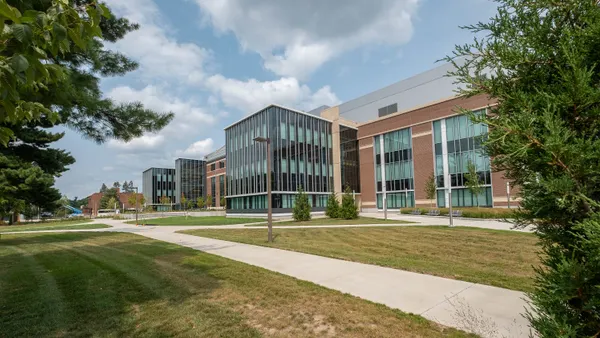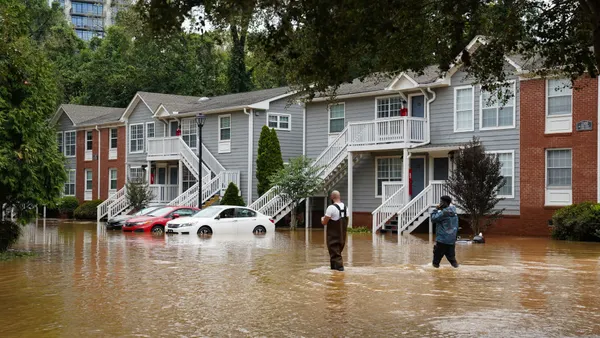Dive Brief:
- Scientists at the National Research Council Canada are finding out that a roof that does a fine job of keeping out water in a regular configuration may not perform the same way when things are placed on top of it and strong winds blow.
- Their study involves low-slope roofs with such modifications are solar panels, green vegetation and other items.
- What they are finding is that winds can either get under the objects, such as solar panels, and create lift or the objects can deflect the wind and create an upward suction, and waterproof membranes can be damaged.
Dive Insight:
The research council staff is being joined by the Special Interest Group for Dynamic Evaluation of Roofing Systems. Among their results so far is a finding that air-sealed concrete roofs do better when winds cause uplift than do steel-and-plywood construction. Solar panels have to be attached to the roof, obviously, but then they become part of the roofing system and change the way it behaves in extreme conditions.












